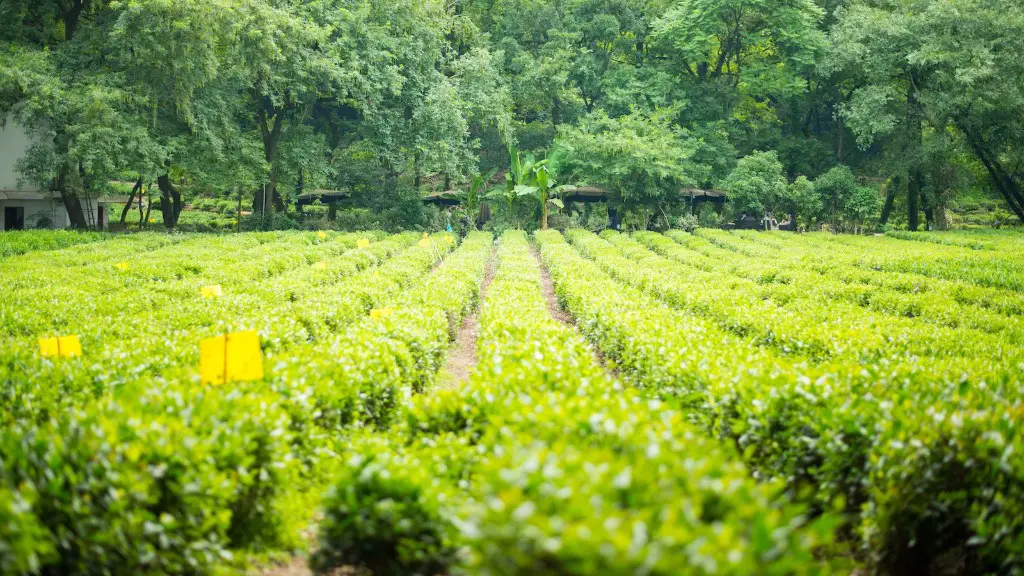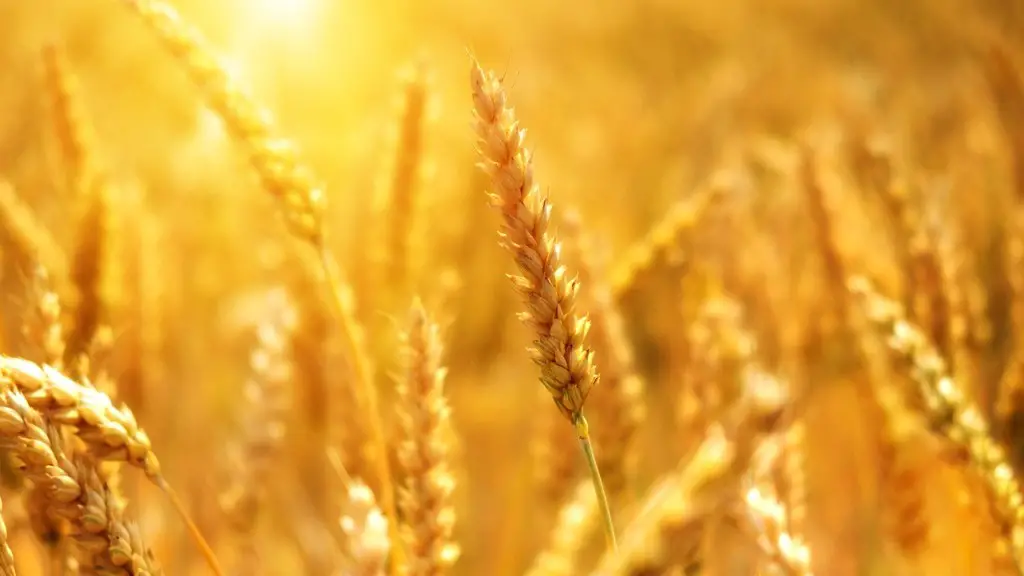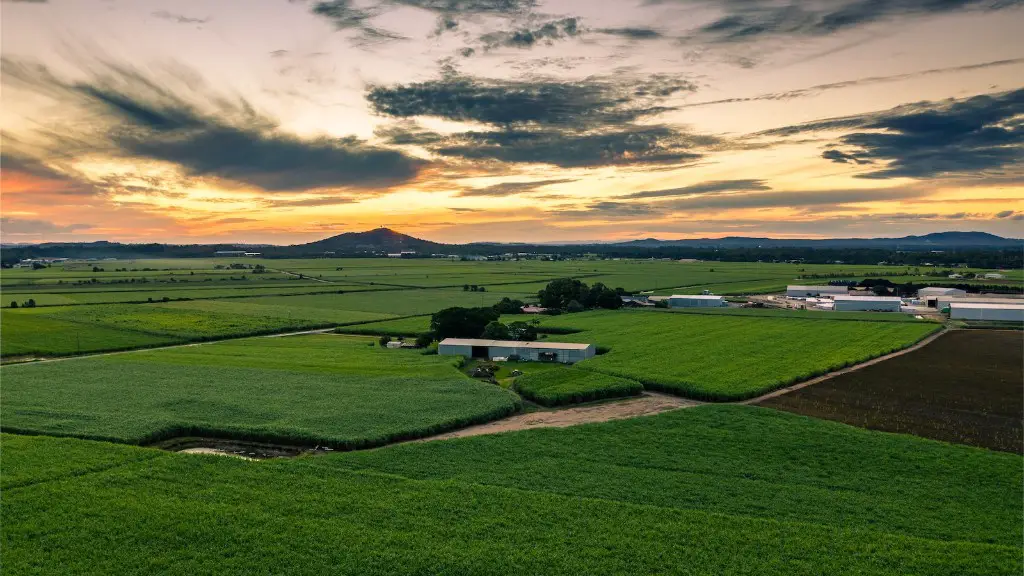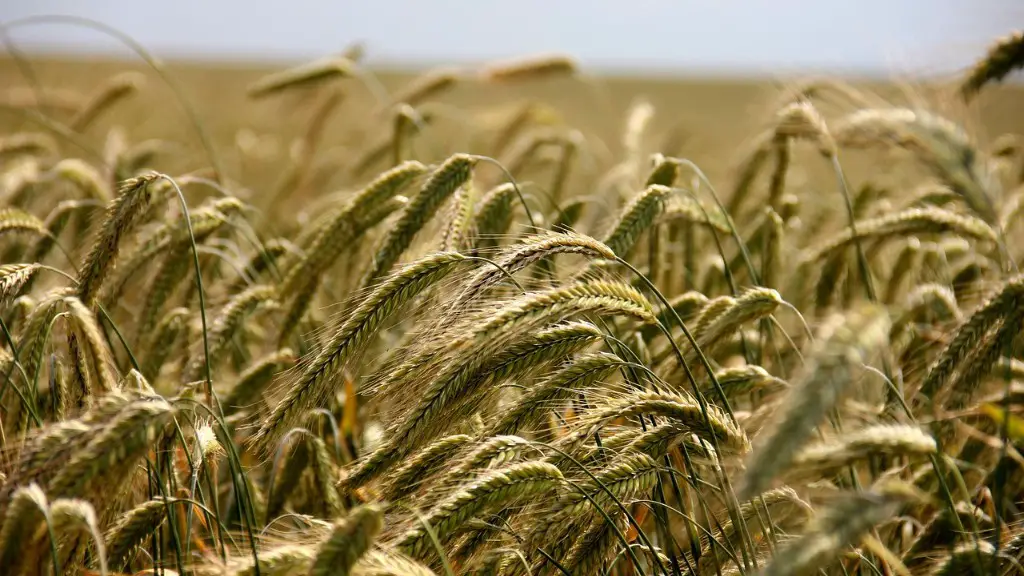Industrialized agriculture is a type of farming that relies heavily on technology and machines. This type of agriculture has made it possible to produce large quantities of food, but it has also had negative impacts on the environment.
Industrialized agriculture refers to a form of agricultural production that relies heavily on machines, chemical fertilizers and pesticides, and a centralized food distribution system. This type of farming is typically characterized by large farms that use mechanized equipment to grow and process crops.
What are some examples of industrialized agriculture?
Industrial agriculture is a type of agriculture that relies on heavy use of synthetic inputs such as pesticides and fertilizers, and on large-scale monoculture production. This type of agriculture is typically characterized by large farms with specialized equipment and a high degree of mechanization.
CAFOs (concentrated animal feeding operations) are one example of industrial agriculture. CAFOs are large-scale livestock operations that keep animals confined in close quarters and often in unhealthy conditions. These operations typically use large amounts of antibiotics and other chemicals to keep the animals alive and to prevent the spread of disease.
Monoculture crops are another example of industrial agriculture. Monoculture is the practice of growing a single crop species on a large scale. This type of agriculture is very efficient in terms of land use and labor, but it can be very damaging to the environment. Monoculture crops are often grown with the help of synthetic inputs such as pesticides and fertilizers, and they can lead to soil erosion, water pollution, and the loss of biodiversity.
Industrial agriculture is a type of farming that involves the large-scale, intensive production of crops and animals. This type of agriculture often involves the use of chemical fertilizers on crops or the routine, harmful use of antibiotics in animals. The use of these chemicals and antibiotics can often lead to negative consequences for the environment and the health of both animals and humans.
What is the major goal of industrialized agriculture
Modern industrial agriculture typically seeks to maximize economic returns through increased crop yields, while minimizing risks of crop losses. This approach is often based on the use of advanced technologies and management practices, such as precision agriculture and genetic engineering. However, it should be noted that not all modern industrial agriculture operations follow this approach, and some may instead focus on other goals such as sustainability or reducing environmental impact.
Industrial agriculture is currently the dominant food production system in the United States. It’s characterized by large-scale monoculture, heavy use of chemical fertilizers and pesticides, and meat production in CAFOs (confined animal feeding operations).
While industrial agriculture has increased food production in the short term, it has come at a huge cost to the environment. Industrial agriculture is a major contributor to climate change, water pollution, and habitat destruction. It also relies heavily on antibiotics and other drugs to keep animals healthy in cramped and unsanitary conditions, which has contributed to the rise of antibiotic-resistant superbugs.
Many experts believe that industrial agriculture is not sustainable in the long term. They argue that we need to move towards more sustainable and environmentally friendly methods of food production.
Why is industrial agriculture a problem?
The industrial agriculture system is not sustainable. It consumes fossil fuel, water, and topsoil at unsustainable rates and contributes to numerous forms of environmental degradation, including air and water pollution, soil depletion, diminishing biodiversity, and fish die-offs.
Industrial agriculture is a type of farming that uses modern technology and equipment to process meat, eggs, milk, crops, and other food items in a quick and efficient way. This type of agriculture can help reduce overhead expenses while earning more revenue and profits, which can in turn lower food costs.
When did industrial agriculture start?
Modern industrial agriculture is a culmination of social and technological processes that sought to increase yields of agriculture by applying fossil fuel energy, mechanization, and advanced crop breeding methods. The industrial agriculture began in the 1800s in response to the needs of growing human populations. The use of fossil fuels, improved machinery, and new crop varieties contributed to the increase in yields. However, the modern industrial agriculture has been criticized for its negative impact on the environment and its reliance on monoculture and chemical inputs.
Subsistence farmers rely on human and animal labor instead of machines, manure instead of chemical fertilizers and natural predators instead of pesticides. They also practice polyculture, which is when different types of crops are planted in one area.
What was the effect of Industrialisation on agriculture
The Industrial Revolution led to a dramatic increase in the productivity of many industries, resulting in changes in the crop patterns from traditional crops to commercial crops. With the increased demand for labor, many rural workers migrated to urban areas in search of work, resulting in the conversion of rural land into urban and industrial land. This reduced the availability of land for agriculture, leading to a decline in agricultural production.
Intensive agriculture is a type of agriculture that uses high levels of inputs and outputs per unit of agricultural land area. This type of agriculture is typically used in developed countries where farmland is limited and land productivity is high. Intensive agriculture typically uses large amounts of fertilizer and pesticides, as well as irrigation and other technology, to maximize crop yields.
What are three major problems of industrial agriculture?
The environmental issues associated with industrial agriculture are far-reaching and complex. They include deforestation, climate change, irrigation problems, pollutants, soil degradation and waste disposal. Each of these problems presents a serious challenge to the sustainability of industrial agriculture. Deforestation, for example, can lead to soil erosion and loss of biodiversity. Climate change can lead to more extreme weather events and reduced crop yields. Irrigation problems can lead to water shortages and soil salinization. Pollutants can contaminate water supplies and soil, and cause health problems in both humans and animals. Soil degradation can lead to reduced crop yields and increased desertification. And finally, waste disposal can lead to soil and water contamination.
Sustainable agriculture is an efficient and effective way to produce food while preserving the environment. There are various methods of sustainable agriculture that can help to reduce the negative impacts of food production, such as organic farming, which restricts the use of pesticides, fertilizers, and antibiotics.
Is industrial agriculture sustainable
The sustainable alternative is to use these resources without depleting them. One way to do this is to use renewable resources, such as solar and wind power, rather than fossil fuels. Another way is to use resources more efficiently, such as using no-till agriculture or drip irrigation.
Intensive farming has many benefits, including supplying enough food at affordable prices. However, every advantage has its cost and disadvantages. In the case of intensive farming, the increased use of chemical fertilizers and pesticides is dangerous to both nature and human health. These chemicals pollute the environment and can cause major health problems due to their poisonous nature.
How does industrialized agriculture contribute to climate change?
The industrial agriculture industry is a significant source of US greenhouse gas emissions, with myriad activities contributing to the tally. Farm equipment emits carbon dioxide as vehicles move across fields during tilling, planting, pesticide and fertilizer applications, and harvest. livestock production is also a large contributor to emissions, as animals release methane gas during digestion. Anaerobic decomposition of manure in storage lagoons and animal feeding operations also emits methane and other greenhouse gases.
The transition from an agricultural to an industrial economy took more than a century in the United States, but that long development entered its first phase from the 1790s through the 1830s. The population of the United States more than doubled during this period, from approximately 4 million in 1790 to more than 10 million in 1830. The vast majority of Americans lived in rural areas and were engaged in farming. Yet even as the United States remained primarily an agricultural nation, the first stirrings of an industrial revolution were taking place. This process was spurred by a number of factors, including the development of new technologies, the opening of new frontiers, and the growth of trade and commerce.
Conclusion
Industrialized agriculture is a type of farming that uses heavy machinery, synthetic fertilizers, and pesticides in order to increase crop yields. This type of agriculture is typically seen in developed countries where there is a high demand for food.
Industrialized agriculture is a type of agricultural production that is characterized by the use of industrial technologies in all stages of production, from the pre-production phase (such as land preparation, planting, and fertilizer application) to the post-production phase (such as harvesting, transportation, and storage). This type of agriculture has higher yields and is more efficient than traditional agriculture.





